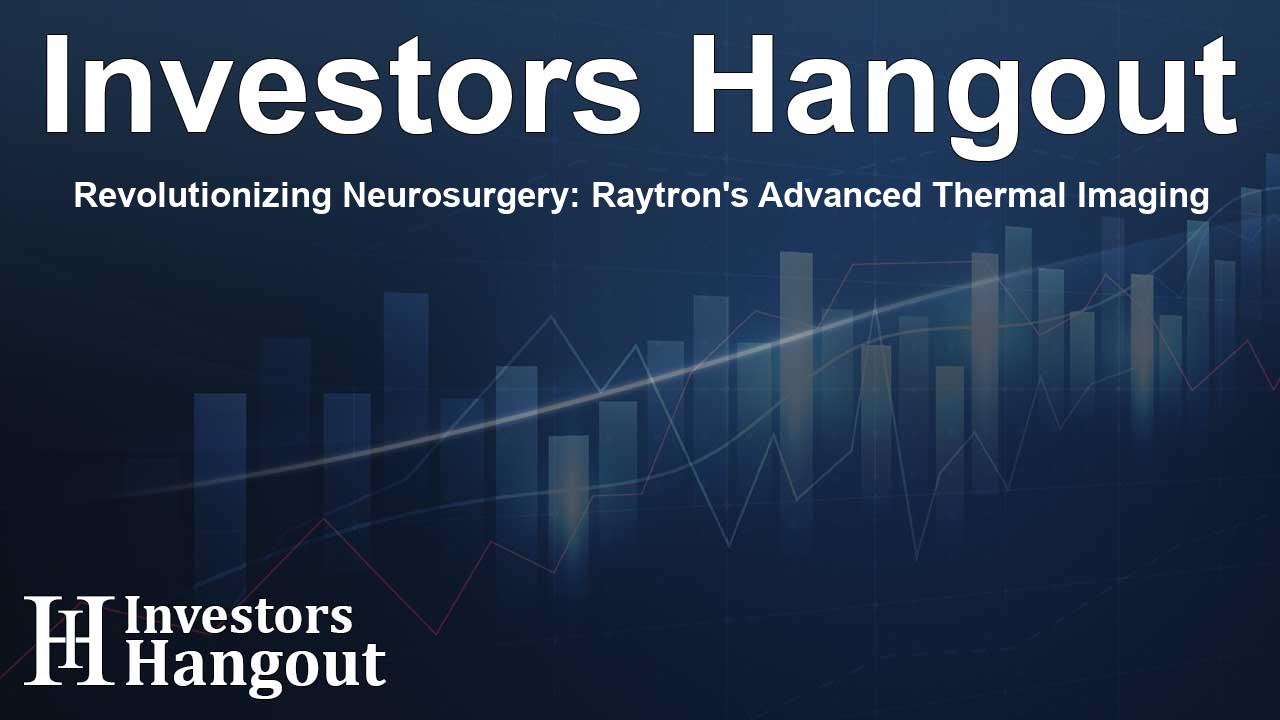Revolutionizing Neurosurgery: Raytron's Advanced Thermal Imaging

Revolutionizing Neurosurgery: Raytron's Advanced Thermal Imaging
In the realm of neurosurgery, gaining precise, real-time insights into cerebral blood flow is crucial for successful outcomes. Traditional methods, particularly those relying on indocyanine green (ICG) fluorescence imaging, often depend on contrast agents that can limit usability and repeatability.
Enter infrared thermal imaging technology, an innovative approach that offers a non-contact, radiation-free, and non-invasive diagnostic alternative. This technology enables continuous monitoring during surgery, significantly enhancing both surgical precision and patient safety during critical procedures.
Understanding Infrared Thermal Imaging in Medical Procedures
Thermal imaging cameras have the ability to detect subtle variations in temperature caused by cerebral blood flow. They create detailed thermal maps that allow surgeons to visualize vascular dynamics that traditional methods cannot reveal. This technology fits seamlessly into a neurosurgical environment, especially during complex procedures like cerebrovascular bypass surgery, empowering medical professionals with continuous monitoring.
Raytron’s Innovative Imaging Solutions
Raytron, an esteemed leader in thermal imaging solutions, has made remarkable advancements in medical technology. The company recently introduced its ATR1280 thermal imaging camera, specifically designed for clinical applications in neurosurgery. Recent applications in surgeries have demonstrated its effectiveness in monitoring patients suffering from moyamoya disease, a rare cerebrovascular disorder where blood flow is severely compromised.
The surgical team at a premier hospital in China conducted a groundbreaking study involving 21 adult patients who underwent a superficial temporal artery to middle cerebral artery (STA-MCA) bypass procedure. They noted numerous advantages when using Raytron's thermal imaging:
Key Advantages of Using Raytron's Technology
- Real-time, high-resolution imagery that supports research and clinical decisions.
- Improved visualization of anastomotic blood flow, leading to informed surgical techniques.
- Seamless integration into existing surgical workflows, ensuring no disruption during procedures.
- Enhanced quantitative accuracy in monitoring cerebral blood flow.
The findings from this study highlight the potential for more informed decision-making during surgeries, contributing to better patient outcomes. These advancements represent a significant step forward in the field of thermographic imaging in neurosurgery.
Raytron's Vision and Commitment to Innovation
Raytron is committed to advancing technology across multiple sectors, including medical diagnostics and emergency response. The company focuses on the development of application-specific integrated circuits (ASICs), micro-electro-mechanical systems (MEMS) sensors, and artificial intelligence (AI) algorithms. With an impressive portfolio of approximately 1,200 patents and a significant portion of its workforce dedicated to research and development, Raytron continues to push the boundaries of thermal imaging technology.
This commitment to innovation ensures that Raytron not only meets the current demands of the medical industry but is also prepared to address future challenges. The company aims to provide valuable solutions that facilitate a deeper understanding of the world through advanced thermal imaging technologies.
For More Information
For those seeking expert thermal imaging solutions tailored for medical applications, Raytron offers comprehensive resources. The marketing department is dedicated to providing detailed insights into how their technology can enhance medical procedures.
Frequently Asked Questions
1. What is infrared thermal imaging?
Infrared thermal imaging is a non-invasive technique that detects temperature differences to visualize blood flow, enhancing surgical precision in procedures.
2. How does Raytron's thermal imaging camera work?
Raytron's thermal cameras create high-resolution thermal maps from temperature variations in blood circulation, helping surgeons visualize vascular flow.
3. What are the benefits of using this technology in neurosurgery?
This technology allows for real-time monitoring during surgery, enhances visualization of blood flow, and integrates smoothly into surgical workflows.
4. Can this technology improve patient outcomes?
Yes, by providing clear insights into cerebral blood flow, it allows for more informed surgical decisions, potentially leading to better patient outcomes.
5. What other industries can benefit from Raytron's technology?
Raytron's thermal imaging solutions are applicable in various sectors, including emergency response and industrial safety, beyond just medical diagnostics.
About The Author
Contact Kelly Martin privately here. Or send an email with ATTN: Kelly Martin as the subject to contact@investorshangout.com.
About Investors Hangout
Investors Hangout is a leading online stock forum for financial discussion and learning, offering a wide range of free tools and resources. It draws in traders of all levels, who exchange market knowledge, investigate trading tactics, and keep an eye on industry developments in real time. Featuring financial articles, stock message boards, quotes, charts, company profiles, and live news updates. Through cooperative learning and a wealth of informational resources, it helps users from novices creating their first portfolios to experts honing their techniques. Join Investors Hangout today: https://investorshangout.com/
The content of this article is based on factual, publicly available information and does not represent legal, financial, or investment advice. Investors Hangout does not offer financial advice, and the author is not a licensed financial advisor. Consult a qualified advisor before making any financial or investment decisions based on this article. This article should not be considered advice to purchase, sell, or hold any securities or other investments. If any of the material provided here is inaccurate, please contact us for corrections.
